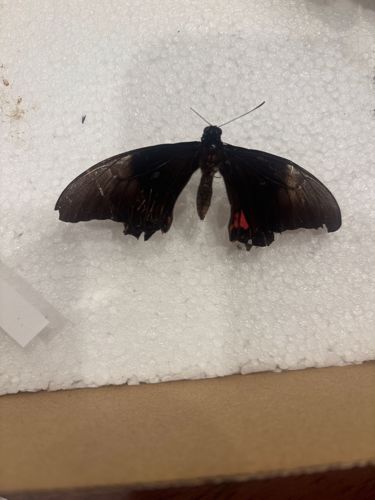Polydamas Swallowtail or Gold Rim Swallowtail
Scientific Name: Battus polydamas
Order & Family: Lepidoptera (Order), Papilionidae (Family)
Size: Wingspan typically ranges from 7 to 9 cm (2.8 to 3.5 inches).

Natural Habitat
Tropical and subtropical areas, open fields, gardens, and along forest edges. Found in the southern United States, Mexico, Central and South America, and the Caribbean.
Diet & Feeding
Adults feed on the nectar of various flowers. Larvae (caterpillars) feed exclusively on plants in the genus Aristolochia (pipevines), which makes them unpalatable to predators.
Behavior Patterns
Diurnal, active during the day. Known for its strong, swift flight. Females lay spherical eggs singly on the leaves, stems, or flowers of host pipevine plants. Caterpillars are gregarious in early instars and later become solitary. They pupate hanging upside down from a silken pad.
Risks & Benefits
Benefits include pollination of various flowering plants. The caterpillars store toxins from their host plants, making both the larvae and adults distasteful to predators, which can be seen as a natural defense mechanism. There are no known risks to humans.
Identified on: 9/19/2025